
Your guide to recently released books, CDs and other teaching resources.
For additional reviews of French-language resources, click here. With the exception of some classroom sets, items reviewed are available on loan from the Margaret Wilson Library at the College. Contact Olivia Hamilton at |
Voices, Histories and More
Who Controls Teachers' Work?
by Richard M. Ingersoll
I was initially disappointed to find that US schools were the focus for this work by Richard Ingersoll - who has taught secondary school in both Canada and the US. However, I found virtually every page held relevance.
I'll bet that most will be nodding agreement at this sampling:
- Children are handed the rights of adulthood but not its responsibilities.
- A school's academic goals and activities are not the same as its social goals and activities.
- Alone in the classroom, it is up to each teacher to make a success or failure of the job.
- Respect is an important and often scarce resource in schools.
Ingersoll finds that teachers are are asked to accept tasks once reserved for parents, churches and communities. They are required to achieve educational excellence and are held accountable for things they cannot control.
He identifies teachers' lack of control as the issue that most affects school climate and teacher turnover.
Ingersoll finds that accountability and power must go hand in hand and that increasing teachers' power has a positive effect on relations between teachers and administrators and ultimately on students.
If we are truly looking for solutions, we should ask teachers for suggestions and act on them. Give teachers the tools to work effectively.
![]() Who Controls Teachers Work? Harvard University Press, Cambridge,
MA, 2003, ISBN 0674009223, hardcover, 345 pages, US$39.95, tel 1-800-405-1619,
fax 1-800-406-9145, www.hup.harvard.edu
Who Controls Teachers Work? Harvard University Press, Cambridge,
MA, 2003, ISBN 0674009223, hardcover, 345 pages, US$39.95, tel 1-800-405-1619,
fax 1-800-406-9145, www.hup.harvard.edu
Reviewed by Marjan Glavac, an author and editor who teaches Grade 5 at Wilfrid Jury Public School in London.
Bilingual Songs
English - French (CD or cassette plus booklet)
by Sara Jordan

 Another high-quality resource from Sara Jordan, this is a two-volume
CD or cassette plus booklet with lyrics and related activities, reproducible
for class use. The titles and lyrics of the songs cover many of the basic
language concepts and essential building blocks for higher learning.
Volume 1 - suitable for Kindergarten and primary classes - covers the
alphabet, numbers to 10, days of the week, months of the year, etc. Volume
2 - suited to junior classes - focuses on more advanced concepts including
some grammar. There are also links to the Ontario curriculum with songs
about measurement and places in the community.
Another high-quality resource from Sara Jordan, this is a two-volume
CD or cassette plus booklet with lyrics and related activities, reproducible
for class use. The titles and lyrics of the songs cover many of the basic
language concepts and essential building blocks for higher learning.
Volume 1 - suitable for Kindergarten and primary classes - covers the
alphabet, numbers to 10, days of the week, months of the year, etc. Volume
2 - suited to junior classes - focuses on more advanced concepts including
some grammar. There are also links to the Ontario curriculum with songs
about measurement and places in the community.
The melodies are fast-paced and cheerful, the lyrics clear as a bell. Male and female voices alternate the two languages. The kits are ideal for French Immersion or Core French classrooms, for families interested in exposing their children to French and for teachers who want to introduce a second language at an early age.
Each CD concludes with a section that repeats the instrumentals only, so that students who have memorized the lyrics (memorization is encouraged) can sing on their own.
Integrating language, math, music and even some social studies in a very professional and engaging format, these song kits represent solid value for money.
![]() Bilingual
Songs (CD or cassette plus booklet), Sara Jordan
Publishing, St. Catharines, 2003, Vol. 1 ISBN 1894262-75-1, Vol. 2 ISBN
1-894262-80-8, each $16.95, tel 905-938-5050, fax 905-938-9970, sjordan@sara-jordan.com, www.sara-jordan.com
Bilingual
Songs (CD or cassette plus booklet), Sara Jordan
Publishing, St. Catharines, 2003, Vol. 1 ISBN 1894262-75-1, Vol. 2 ISBN
1-894262-80-8, each $16.95, tel 905-938-5050, fax 905-938-9970, sjordan@sara-jordan.com, www.sara-jordan.com
Reviewed by Helen Donohoe, a recently retired teacher with the Hamilton-Wentworth District School Board
Let's Call It Canada
by Susan Hughes
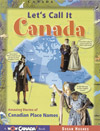 Let's Call It Canada is another title in the Wow Canada! Series
by award-winning children's writer and editor Susan Hughes. It certainly
deserves a place in any school library. The book provides a wide range
of the more unusual and intriguing place names and how they were acquired.
Aboriginal place name origins (many of which were anglicized) remind
the reader that the land that came to be called Canada existed thousands
of years before the arrival of Europeans. The part played by immigrant
groups in naming Canada is well detailed.
Let's Call It Canada is another title in the Wow Canada! Series
by award-winning children's writer and editor Susan Hughes. It certainly
deserves a place in any school library. The book provides a wide range
of the more unusual and intriguing place names and how they were acquired.
Aboriginal place name origins (many of which were anglicized) remind
the reader that the land that came to be called Canada existed thousands
of years before the arrival of Europeans. The part played by immigrant
groups in naming Canada is well detailed.
Ranging from places named after parts of the body, such as Knee Lake and Footprint Lake, to the perpetually perplexing Moose Jaw and Medicine Hat, the book succeeds in weaving the complex history and makeup of Canada and helping students gain a better understanding. A mix of photographs and cartoon-style drawings (two to three per page) provides focus for each section. Students can dip into what interests them or focus on specific curriculum items.
As a reference text and source of enrichment Let's Call It Canada will add great dimension to the study of Canada from Grade 5 through secondary school. Although it may not appeal as much to the less academic student, the linguistically interested and those keen to expand their general knowledge will devour it. Definitely a classy addition to the school!
![]() Let's
Call It Canada, Maple Tree Press Inc, Toronto, 2003,
ISBN 1-894379-50-0, softcover, 128 pages, $9.95, tel 416-304-0702, fax
416-304-0525, egault@mapletreepress.com
Let's
Call It Canada, Maple Tree Press Inc, Toronto, 2003,
ISBN 1-894379-50-0, softcover, 128 pages, $9.95, tel 416-304-0702, fax
416-304-0525, egault@mapletreepress.com
Reviewed by Helen Donohoe, a recently retired teacher with the Hamilton-Wentworth District School Board.
A Pioneer Christmas
by Barbara Greenwood
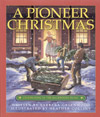 You will learn about the Kissing Ball and many other customs of Christmas
past in this story/fact book. The book traces the Christmas preparations
of the Robertson family in 1841 as they wait for visitors who must come
through a winter storm. As in the companion volume, A Pioneer Thanksgiving,
Barbara Greenwood successfully interweaves the storyline with facts,
activities and crafts aimed at ages 8 to 12.
You will learn about the Kissing Ball and many other customs of Christmas
past in this story/fact book. The book traces the Christmas preparations
of the Robertson family in 1841 as they wait for visitors who must come
through a winter storm. As in the companion volume, A Pioneer Thanksgiving,
Barbara Greenwood successfully interweaves the storyline with facts,
activities and crafts aimed at ages 8 to 12.
This volume covers Christmas decorations, carols, games, food, gifts, toys, winter travel and special traditions such as a Christmas Frolic.
Black-and-white and sepia illustrations seem appropriate to pioneer times - though some children may find them less attractive than colour - lend an olden-days feel.
This book can be used in conjunction with a pioneers unit and is a good resource for students doing research since facts integrated into the story are easily refound via a detailed index.
![]() A
Pioneer Christmas, Kids Can Press, Toronto, 2003, ISBN 1-55074-935-6,
hardcover, 48 pages, $16.95, tel 416-925-5437, fax 416-960-5437, kcullihall@kidscan.com, www.kidscanpress.com
A
Pioneer Christmas, Kids Can Press, Toronto, 2003, ISBN 1-55074-935-6,
hardcover, 48 pages, $16.95, tel 416-925-5437, fax 416-960-5437, kcullihall@kidscan.com, www.kidscanpress.com
Reviewed by Margaret Grift, a librarian at Brantford Christian School.
A Breath of Fresh Air
Celebrating Nature and School Gardens
by Elise Houghton
Foreword by Margaret Atwood
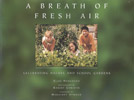 A Breath of Fresh Air is about children, schools, gardens, communities
and ecology. The struggles and successes of school garden creation and
rehabilitation are covered in more than 20 case studies from schools
in the Toronto District School Board where urban students create and
maintain natural spaces.
A Breath of Fresh Air is about children, schools, gardens, communities
and ecology. The struggles and successes of school garden creation and
rehabilitation are covered in more than 20 case studies from schools
in the Toronto District School Board where urban students create and
maintain natural spaces.
The text encourages evaluation of the purpose of the garden space. The case studies are organized into three categories: self-contained gardens, landscaping (tree planting programs) and naturalization (habitat rehabilitation). The text has a strong environmental message and encourages schools to engage in outdoor education - whether on a grand or small scale. Images throughout depict a wealth of outdoor classroom learning experiences.
This is a valuable book for any school that wishes to blend education, ecology and community.
![]() A
Breath of Fresh Air, Learnxs Foundation and Sumac Press in
co-operation with the Toronto District School Board, Toronto, 2003, ISBN
0-920020-61-5, softcover, 136 pages, $29.95, tel 416-531-6250, fax 416-531-3892,
www.sumachpress.com
A
Breath of Fresh Air, Learnxs Foundation and Sumac Press in
co-operation with the Toronto District School Board, Toronto, 2003, ISBN
0-920020-61-5, softcover, 136 pages, $29.95, tel 416-531-6250, fax 416-531-3892,
www.sumachpress.com
Reviewed by Laura Barron, who teaches at Fernforest Public School, Peel Board of Education.
From the Ground Up
Creating a Culture of Inquiry
Edited by Heidi Mills & Amy Donnelly
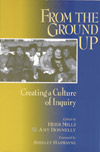 Amy Donnelly, a school principal, outlines what she considered essential
as she established a new, New York City public school, The Center for
Inquiry. Using the reflections of student teachers, university faculty
and dedicated classroom teachers, Donnelly reflects on the power of inquiry
and the value of an intimate learning community.
Amy Donnelly, a school principal, outlines what she considered essential
as she established a new, New York City public school, The Center for
Inquiry. Using the reflections of student teachers, university faculty
and dedicated classroom teachers, Donnelly reflects on the power of inquiry
and the value of an intimate learning community.
The book begins with an explanation of her criteria for staff curriculum development - learning, teaching, evaluation, language and knowledge domains, as well as the community and society where the children live. Teachers' journal entries outline a typical day. Samples of students' writing demonstrate their complex language skills.
The book inspired me to underline, highlight and make marginal notes. It is an informative and inspirational resource.
![]() From the Ground Up, Heinemann, Portsmouth, NH, 2001, ISBN 0-325-00267-3,
softcover, 244 pages, $36.13, Pearson Education Canada, tel 1-800-567-3800,
fax 1-800-563-9196
From the Ground Up, Heinemann, Portsmouth, NH, 2001, ISBN 0-325-00267-3,
softcover, 244 pages, $36.13, Pearson Education Canada, tel 1-800-567-3800,
fax 1-800-563-9196
Reviewed by Dorothea Bryant, a retired Durham teacher and consultant to Queen's University and Medaille College in Buffalo.
Poetry Workshop for Middle School
Activities That Inspire Meaningful Language Learning
by Michelle Ambrosini and Teresa M. Morretta
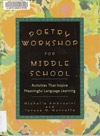 This is a great book for those who feel more in a muddle than in the
Middle when it comes to teaching poetry to Grade 7 and 8. Those wondering
where authors Michelle Ambrosini and Teresa Morretta found these precocious
writers (Is there such a thing as a ringer when it comes to students?)
will take hope from the highly structured poetry-writing techniques,
which will make passable poets of moderately diligent and attentive teenage
writers.
This is a great book for those who feel more in a muddle than in the
Middle when it comes to teaching poetry to Grade 7 and 8. Those wondering
where authors Michelle Ambrosini and Teresa Morretta found these precocious
writers (Is there such a thing as a ringer when it comes to students?)
will take hope from the highly structured poetry-writing techniques,
which will make passable poets of moderately diligent and attentive teenage
writers.
Don't be put off by Chapter 1, Laying a Foundation for Poetry Workshop. The theory is only moderately dense. It serves primarily to establish that the book has sufficient gravitas to satisfy Ministry and board curriculum requirements. What counts is the practical writing activities that make up the bulk of the book.
Seventeen activities are reviewed. All of them will complement your existing file of haikus, cinquains and diamantes, and the analysis of pre-approved rock or hip-hop lyrics. Some are stand-alone writing techniques; others are used in conjunction with novels to reinforce knowledge of the text.
Various appendices provide word banks, graphic organizers, workable definitions and examples of poetic devices including simile, metaphor, personification and alliteration. Since teachers approach evaluation of original work with trepidation, fearing harsh judgement will stifle effort, the rubric for evaluating a poem is reassuring.
I have two quibbles. One is that the chapter on revising poems and conferencing is too succinct. The second is that resource books referenced may not be found in school or board resource libraries. But the book is a useful addition to the teacher's shelf.
![]() Poetry Workshop for Middle School, International Reading Association,
Newark, DE, 2003, ISBN 0872075176, softcover, 118 pages, US$18.95, tel
302-731-1600, fax 302-731-1057, www.reading.org
Poetry Workshop for Middle School, International Reading Association,
Newark, DE, 2003, ISBN 0872075176, softcover, 118 pages, US$18.95, tel
302-731-1600, fax 302-731-1057, www.reading.org
Reviewed by Fred DuVal, a bilingual program officer in the Professional Affairs Department of the College.
Professor Noggin's Educational Card Games
Famous Inventions, Wonders of Science, Ancient Civilizations, First Peoples
Produced by Outset Media
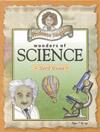 Professor Noggin's card game series offers players age seven and up
an informative, educational and fun way to spend free time in class,
during indoor recess or at an activity centre. It's Canadian too!
Professor Noggin's card game series offers players age seven and up
an informative, educational and fun way to spend free time in class,
during indoor recess or at an activity centre. It's Canadian too!
Each card game - Wonders of Science, Famous Inventions, First Peoples of North America and Ancient Civilizations (there are eight others in the series) - comes with 30 illustrated cards and a three-numbered die. Each card has six questions divided into "easy" and "hard" levels. Players take turns rolling the die and answering questions to win cards. The player holding the most cards wins the game.
Instructions are clear and concise and contain argument-avoiding directions such as "The youngest player goes first." Each card has a topic and an appropriate illustration. The Wonders of Science topics include plant life, weather and famous scientists. The Ancient Civilization game - while too Mediterranean-centric with its many cards on ancient Egypt, Rome and Greece - does have one card each for China, Japan and the Aztecs.
The questions are wide-ranging and everyone is bound to learn something new along the way. However, labelling the skill levels as easy and hard may not have been a good choice. "Easy" questions include, "What farm tool were deer antlers used as?" and "A flagellum helps some cells do what: breathe, eat or move?" How many seven-year-olds could answer these "easy" questions?
The games can be educational and fun for many age and grade levels. Teachers of Grade 6 would find the First Peoples of North America game a good addition to their social studies periods and Ancient Civilizations fits nicely with the Grade 5 curriculum.
Professor Noggin's card game series has won several awards. The web site (www.professornoggin.com) is fun to navigate and includes further information on the games. There is even an area where you can suggest ideas for a new card game. Teachers can also learn a lot, even from the "easy" questions!
![]() Professor Noggin's Educational Card Games, Outset Media, Victoria,
2003, each $14.99, tel 250-592-7374, fax 250-592-7522, www.outsetmedia.com
Professor Noggin's Educational Card Games, Outset Media, Victoria,
2003, each $14.99, tel 250-592-7374, fax 250-592-7522, www.outsetmedia.com
Reviewed by Chris Vert, who is on leave of absence from Island Public/Natural Science School in Toronto.
Science Alive Series
by Darlene Lauw and Lim Cheng Puay
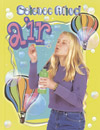 This colourful, fun-to-read series, which covers each strand in the
Ontario Curriculum, would be a wonderful addition to any elementary science
class. A six-book set, Science Alive makes science accessible
and interesting by combining practical experiments with scientific facts
and easy-to-understand concepts. Topics include air, weather, materials,
earth and the solar system, light, electricity, heat, water, magnets,
motion, the human body and sound.
This colourful, fun-to-read series, which covers each strand in the
Ontario Curriculum, would be a wonderful addition to any elementary science
class. A six-book set, Science Alive makes science accessible
and interesting by combining practical experiments with scientific facts
and easy-to-understand concepts. Topics include air, weather, materials,
earth and the solar system, light, electricity, heat, water, magnets,
motion, the human body and sound.
Each book demystifies difficult concepts. In Air students find out about breathing, hot-air balloons and flight. Fun experiments include passing an egg through the neck of a bottle and making a parachute. Weather shows students how to make their very own rainbow and a pinecone barometer.
Materials offers experiments with floating and chemical reactions. Historical information explains chromatography and early forms of ink. Earth and the Solar System would be an invaluable resource for any Grade 6 class. It outlines the orbit of the planets and includes an in-depth study on stars and stargazing. The Human Body answers questions about the body, its functions and processes. Experiments include finding your blind spot and mapping your digestive system. Finally, in Water students learn about condensation, surface tension and water pressure.
Clear text, simple experiments and bright illustrations make this an exciting and well organized text for students of all ages.
![]() Science Alive! Crabtree Publishing, St. Catharines, 2003, softcover,
32 pages, each $8.96, tel 905-682-5221 or 1-800-387-7650, fax 1-800-355-7166, www.crabtree-pub.com
Science Alive! Crabtree Publishing, St. Catharines, 2003, softcover,
32 pages, each $8.96, tel 905-682-5221 or 1-800-387-7650, fax 1-800-355-7166, www.crabtree-pub.com
Reviewed by Andrea Murik, a Special Education Resource Teacher with the Simcoe County District School Board.
Come and See My Rainbow
Kindergarten Music, Volume 1 (CD)
by Barb McIlquham
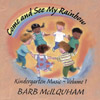 This unique collection of original music is presented so that children
learn as they listen. On the 20-track interactive compact disc, tracks
11 through 20 are instrumental versions of the first 10. The CD includes
learning expectations and lesson plans corresponding to each song and
suggestions for Before Teaching the Song and After Teaching the Song.
These suggestions can be printed out or viewed
online at www.archangelmusic.ca.
Song lyrics are also available as part of the package, as is an assessment
tool (in rich text format).
This unique collection of original music is presented so that children
learn as they listen. On the 20-track interactive compact disc, tracks
11 through 20 are instrumental versions of the first 10. The CD includes
learning expectations and lesson plans corresponding to each song and
suggestions for Before Teaching the Song and After Teaching the Song.
These suggestions can be printed out or viewed
online at www.archangelmusic.ca.
Song lyrics are also available as part of the package, as is an assessment
tool (in rich text format).
Come and See My Rainbow is a lively and energetic compilation that not only teaches children language and math skills but also settles them at day's end with The Clean Up Song. A great way to capture and hold a young child's attention, this CD is based on the Ontario Ministry of Education and Training document, The Kindergarten Program, 1998.
Highly recommended.
![]() Come and See My Rainbow (CD), Archangel Music, Hamilton, 2002,
tel 905-318-5153, fax 905-318-7248, inquire@archangelmusic.ca, www.archangelmusic.ca
Come and See My Rainbow (CD), Archangel Music, Hamilton, 2002,
tel 905-318-5153, fax 905-318-7248, inquire@archangelmusic.ca, www.archangelmusic.ca
Reviewed by Majella Atkinson, who teaches Grade 6 at St. Pius X School in Toronto.
Your Top Students
by Shirley Taylor
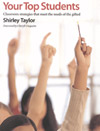 Author Shirley Taylor asserts that some teachers think gifted students
will find their own way and that their primary responsibility is to help
students who are falling behind. She argues that gifted children often
don't receive the accommodations they require to reach their potential.
Author Shirley Taylor asserts that some teachers think gifted students
will find their own way and that their primary responsibility is to help
students who are falling behind. She argues that gifted children often
don't receive the accommodations they require to reach their potential.
In the foreword, Cheryll Duquette writes, "Many gifted students are under-served . Often enrichment activities are an afterthought prepared and delivered only if the teacher has extra time."
Taylor defines giftedness, identifies and debunks some myths and provides a basic overview of the major theories (Gardner's theories of multiple intelligences, the Renzulli model of giftedness, Bloom's taxonomy, Treffinger's self-directed learning model and Goleman's theory of emotional intelligence).
Your Top Students offers a four-stage method of program planning for integrated classrooms. Included are black-line masters for teacher and student use and a recommended reading list.
![]() Your Top Students, Pembroke Publishers, Markham, 2003, ISBN
1-55138-159-1, softcover, 144 pages, $18.95, tel 905-477-0650 or 1-800-997-9807,
fax 905-477-3691 or 1-800-339-5568, mary@pembrokepublishers.com
Your Top Students, Pembroke Publishers, Markham, 2003, ISBN
1-55138-159-1, softcover, 144 pages, $18.95, tel 905-477-0650 or 1-800-997-9807,
fax 905-477-3691 or 1-800-339-5568, mary@pembrokepublishers.com
Reviewed by Nadira Baksch, who teaches part-time at the Oxford Learning Centre, Brampton North.
Les garçons à l'école
(French only)
by Jean-Guy Lemery
 Are we losing boys in the school system? Are their strengths being recognized
or do curriculum expectations and teaching methods accentuate their vulnerabilities?
Are we losing boys in the school system? Are their strengths being recognized
or do curriculum expectations and teaching methods accentuate their vulnerabilities?
In Les garçons à l'école, Jean-Guy Lemery - a teacher for more than 30 years - outlines the differences in the ways girls and boys learn and provides advice on motivating boys in their learning. He suggests using humour and computers, including practical examples in the classroom, providing an action-based context. Most importantly, Lemery encourages teachers to take boys' interests into account in all subjects and advocates an appreciation for the male model in the schools.
Statistics presented at the beginning of the book indicate that boys are stronger than girls in mathematics but less successful in reading, and that they are more likely to drop out in high school. He offers some research into differences between male and female brains. The information provided, while not really new, is incorporated in a manner that helps us empathize with boys' difficulties at school.
Near the end of the book, Lemery asks some thought-provoking questions: Should art and science be more closely integrated? Why do boys like computer games so much? Where are the men in the primary division? Should co-education be revisited?
Les garçons à l'école presents information clearly. Lemery does not offer a solution, but proposes in-depth reflection. Teachers who read this book will return to their classrooms armed not with copious activities but with the desire to improve boys' experiences of school.
![]() Les
garçons à l'école, les Éditions
de la Chenelière inc, Montreal, 2004, ISBN 2-7651-0324-0, softcover,
104 pages, $26.95, www.cheneliere-education.ca
Les
garçons à l'école, les Éditions
de la Chenelière inc, Montreal, 2004, ISBN 2-7651-0324-0, softcover,
104 pages, $26.95, www.cheneliere-education.ca
Reviewed by Ramona Dempsey, who teaches French Immersion for the York Regional School Board.








